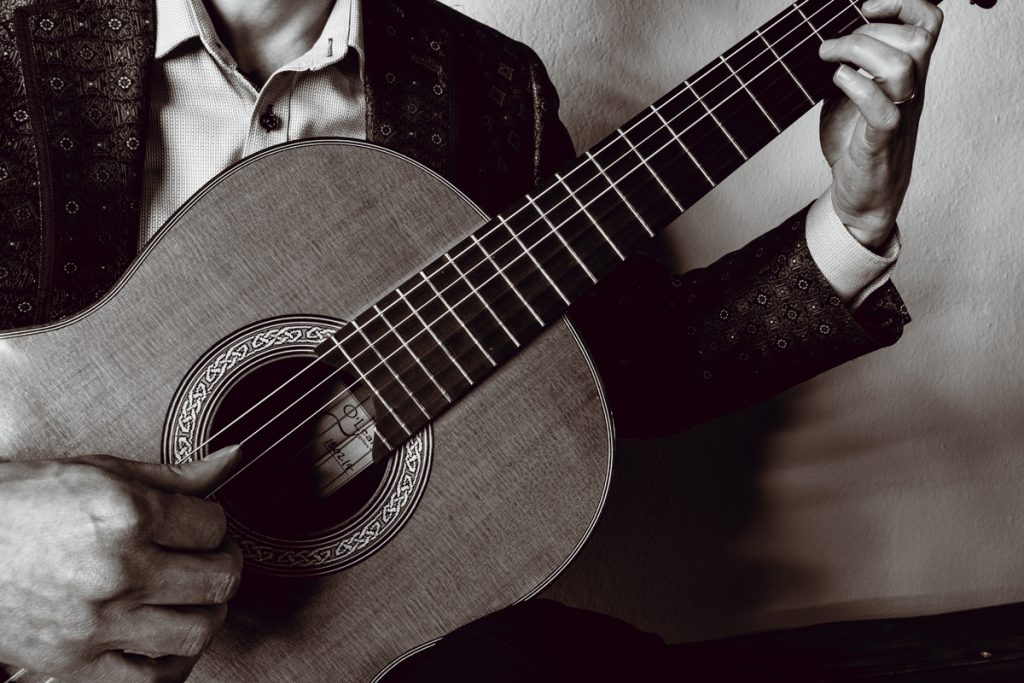Contrary to what most people think, you don’t need formal classical training to be able to learn, perform, and enjoy playing classical pieces for family and friends. Whatever style you play, it’s easier than you think.
These free beginner classical guitar lessons are from Andrew Leonard’s Take 5: Beginner Classical, which is an accelerated curriculum designed to help get your classical technique up and running quickly without having to struggle through a lot of tedious exercises and formal training. Work through the course and you’ll have a basic classical technique under your belt and five classical pieces in your repertoire!
Lágrima – Overview
Francisco Tárrega (1852-1909) was one of the great masters of the classical guitar. He lived in Spain and his performances, compositions and teaching led to the development of modern day classical guitar playing. Some of his most well know compositions are: “Capricho Árabe”, “Recuerdos de la Alhambra”, “Adelita” and this piece “Lágrima”.
“Lágrima” means tear. Apparently, Tárrega wrote this piece while he was performing in London and feeling homesick.
Lágrima – Performance
During the performance of Francisco Tárrega’s “Lágrima”, I play each section one time. There are two sections, played A-B-A.
When you perform “Lágrima”, the proper form is to play with repeats: A-A-B-B-A. This is explained in the breakdown.
As you listen and watch, notice we’re using all of the fretboard with many left hand fingers moving in many opposite directions. Notice the use of legato: Look at how I’m holding down the bass notes while playing the melody and listen for the legato sound.
Notice the difference in mood between the A and B sections. The A section is in E major and the B section is in E minor.
Also, focus on the right hand classical guitar technique. You will see both rest strokes and free strokes being used to bring out the melody and soften the accompaniment.
Enjoy! You have the opportunity to play one of the masterpieces written for classical guitar.
Lágrima – Breakdown
This is a very complex classical guitar piece. I suggest you learn one part at a time before putting the entire piece together. One strategy is to learn the smaller sub phrases individually before moving on. Another possibility is to divide the entire piece into two measure groups.
When learning a piece, I always start by playing very slowly, focusing on accuracy and good tone. I take as much time in between notes to prepare the right hand and left hand before I play. I think of the concept as “correcting the mistakes, before they occur”. The last thing I add is playing in time.
Pay close attention to the left hand fingerings. Strive for a legato sound and notice where I am holding notes down with my left hand. Again, the finger independence you develop will improve your left hand classical guitar technique.
While keeping many different fingers on the fretboard at the same time, make sure you monitor how much pressure you’re using. Use as little tension as you need. A common mistake is to apply to much pressure from the left hand thumb. Lastly, be aware of the separation of melody and accompaniment. As suggested earlier in the course, take the time to learn to play the melody alone.
Dig these free beginner classical guitar lessons? Check out the full course, Take 5: Beginner Classical, for more including tab, notation, and jam tracks!
